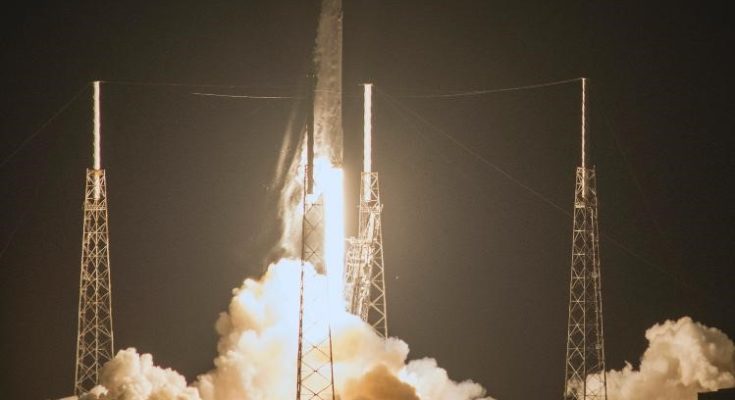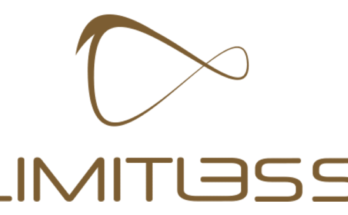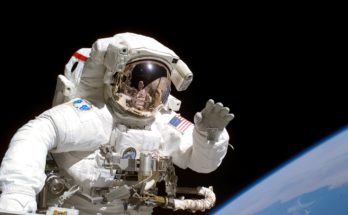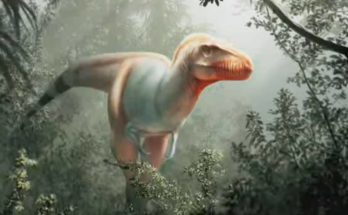SpaceX is getting ready for its fifth dispatch of the year: a resupply strategic the International Space Station (ISS). The mission will carry a group of science material to the space travelers living and working in the circling research facility.
This flight, named CRS-20, denotes the twentieth and last strategic SpaceX under the organization’s first business payload resupply benefits contract with NASA. Roosted on a Falcon 9 rocket will sit a payload Dragon case loaded up with in excess of 4,300 lbs. (1,950 kilograms) of provisions, including in excess of 2,100 lbs. (950 kg) of science hardware.
The logical payload will bolster a large group of trials across Expeditions 62 and 63, concentrating on a scope of points, from natural sciences (developing human heart cells in space), to water preservation strategies, to molecule froth producing and the expansion of another examination stage on the ISS.
Obligingness of SpaceX, starting at about 11:30 p.m. EST (0430 GMT), cordiality of NASA TV. People can likewise watch the dispatch legitimately from SpaceX here, starting at 11:35 p.m. EST (0435 GMT).
Adidas support
In its endless mission to make the best athletic shoe, Adidas has turned its sights to the International Space Station. The sportswear organization has built up a presentation padded sole — an extra shoe layer between the insole (alongside your feet) and the bottom (what contacts the ground) — that will improve comfort.
To make its padded sole, Adidas utilizes a procedure called molecule froth shaping, in which a large number of little pellets are impacted into a form so they intertwine. To streamline the procedure and make the best shoe it can, Adidas is going to attempt this procedure in microgravity. The analysis, named Adidas (Boost Orbital Operations on Spheroid Tessellation), will take a gander at how the particles combine in space.
By expelling gravity from the procedure, the group can investigate singular pellet movement and area. The consequences of this examination could show that the space station is a decent stage for testing out new assembling techniques and could prompt increasingly productive methods for pressing and padding materials.
Water protection
Delta Faucet Co., a maker of shower heads and other washroom equipment, is propelling a payload on CRS-20 that will try to all the more likely see how water beads structure. The organization will utilize that information to manufacture a superior shower head that lines up with Delta’s definitive objective: making the vibe of expanded weight while utilizing less water.
Saving water is staggeringly significant, yet perhaps the greatest disadvantage is that eco-accommodating, low-stream shower heads don’t proceed just as their less earth benevolent partners. Clients whine that the water pressure feels so low it’s hard to wash off appropriately, which can bring about longer showers and, at last, more water utilization.
To help relieve this issue, Delta has made a one of a kind shower head, called the H2Okinetic, that controls the size and the speed of the water beads with the assistance of a swaying chip. That chip makes a superior shower understanding by separating the water stream into greater beads and shooting them out quicker, giving the hallucination of more water.
“Water is a precious commodity,” Garry Marty, chief architect at Delta Faucet, said during a prelaunch instructions on Thursday (March 5). “We are trying to create a shower head to keep our customers happy while using less water.”
They proceeded to clarify that once the water leaves the channels, it basically doesn’t have any weight. What people’re feeling are the beads. With this new shower head, Delta Faucet can control the size and speed on each drop, upsetting the manner in which a shower gadget conveys a shower.
“Lower-flow showers aren’t really great to be under,” Marty said. “But the more we understand, the more we can improve.”
Marty included that, sometime in the future, humankind will be living on the moon or Mars and will require an approach to wash up. The exercises gained from this examination go past rationing water and client experience, they said; it has suggestions for the space business also. Yet, for the present, the greater concern is to more readily comprehend the basics of water bead arrangement.
Developing cardiovascular cells in space
Coronary illness is the No. 1 reason for death in the U.S. A group of analysts from Emory University in Atlanta, drove by Chunhui Xu, are sending a test up to the space station to investigate how viably immature microorganisms can be transformed into heart muscle cells.
The information gathered could prompt new treatments and even accelerate the advancement of new medications that can all the more likely treat coronary illness.
The microgravity condition found on the space station is known to profoundly affect cell development. Through this exploration, the group expects to comprehend the effect microgravity has on heart antecedents (cardiovascular cells made from immature microorganisms) and how adequately they produce heart muscle cells, called cardiomyocytes.
Ground-based research shows that when cells are developed under reenacted microgravity conditions, the creation pace of cardiomyocytes is more prominent than if they were become under the impacts of gravity. By sending the examination to the space station, Xu and their group will have the option to decide whether their outcomes are exact.
“Our goal is to help make stem cell-based therapy more readily available,” Xu said during the briefing. “If successful, the demand for it will be tremendous, because heart disease is the No. 1 killer in America.”
So as to have a fruitful treatment, Xu said that the group should create countless top notch cardiomyocytes. To do that, the scientists need to initially comprehend the systems behind cell change.
Another exploration stage
Bartolomeo is another exploration stage that will be introduced on the outside of the space station. Put outside the European Columbus module, this science gallery will have upwards of 12 research tests one after another.
Worked via Airbus, the stage will empower specialists to lead more investigations on the station’s outside. During a prelaunch preparation, NASA and Airbus clarified that Bartolomeo’s latent capacity utilizes incorporate Earth perception, apply autonomy, materials science and astronomy.
“All of your research dreams can come true with Bartolomeo,” said Andreas Schuette, program chief of Bartolomeo at Airbus.
What’s more, parking spaces on the clothes washer estimated stage are comprehensive, which implies that specialists can follow through on one cost to dispatch, introduce, work and even come back to Earth. By working straightforwardly with organizations like NASA, ESA, and SpaceX, Airbus can offer a practical methods for directing exploration on the space station.
The organization is likewise working with the United Nations with an end goal to allure the individuals who wouldn’t in any case have the option to bear to send payloads into space. The couple have collaborated with the United Nations Office for Outer Space (UNOOSA) to get that going. (The organization attempts to make space progressively open.)
In the event that all goes as booked, the Dragon will show up at the International Space Station on Monday (March 9) at around 6 a.m. EDT (1000 GMT). From that point, NASA space explorers Jessica Meir and Drew Morgan will utilize the station’s Canadarm2 mechanical arm to catch and connect the rocket, before starting the emptying procedure.
Disclaimer: The views, suggestions, and opinions expressed here are the sole responsibility of the experts. No Just Examiner journalist was involved in the writing and production of this article.




